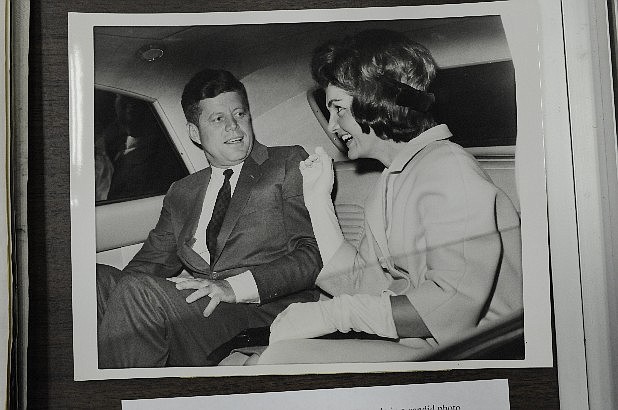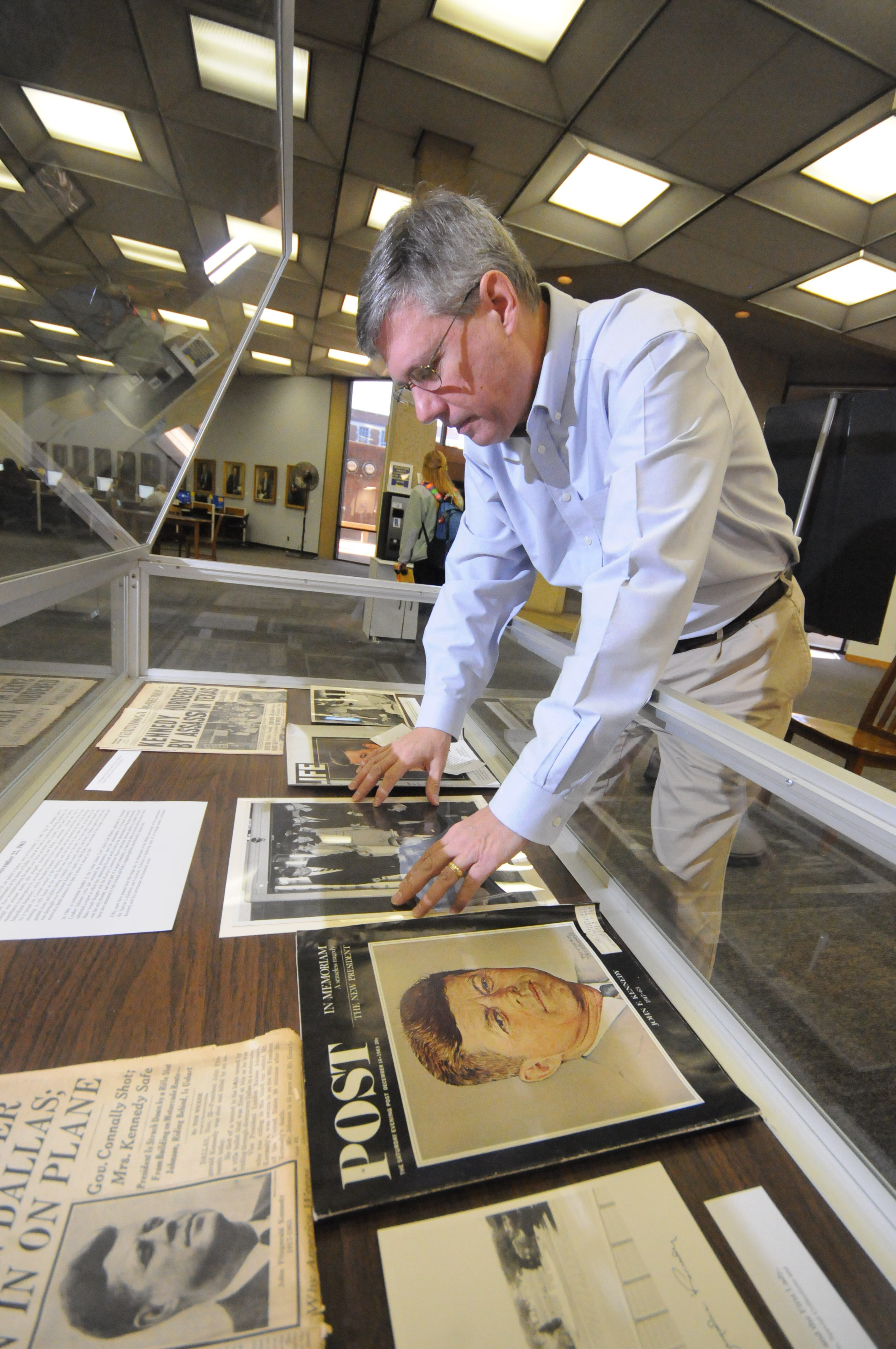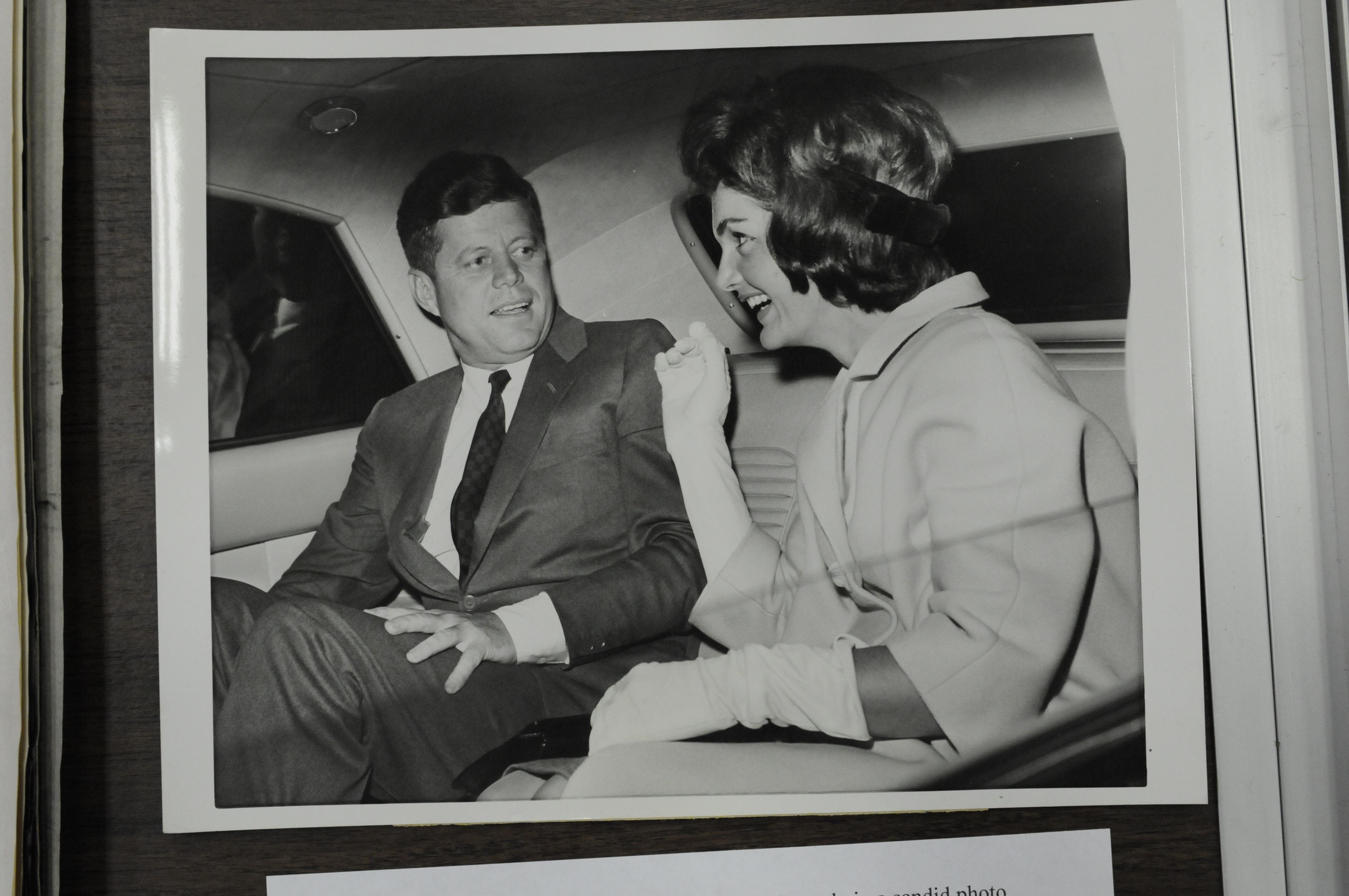The black-and-white photograph shows a recently widowed first lady, holding the hand of her dead husband's brother as the president's casket is loaded into a hearse.
The picture is among 85 images donated to the UTC Library's Special Collections by veteran Associated Press photographer -- and Chattanooga native -- John Rous. The images are now on display in the main library to commemorate the 50th anniversary of John F. Kennedy's assassination on Nov. 22, 1963.
Rous, who covered each president from Franklin D. Roosevelt through Richard M. Nixon, donated the photographs in his will when he died in the 1990s.
The central photo of the Rous display is of Jacqueline Kennedy holding Bobby Kennedy's hand as a crowd of people helps unload the slain president's body from an airplane.
The image-conscious, iconic president was known for his effective use of the visual, from staged photos with family to a composed presence in his televised debates with Nixon. However, in a historic twist it would be film images of his death that continue to linger in the public consciousness.
The process by which Rous made the photograph and got it out to news services seems ancient when compared with today's ubiquitous use of camera phones and instant uploading of images to the Internet.
First, Rous would have had to know how to take in the entire scene and, with a trained eye, decide the exact composition of the shot, said Billy Weeks, UTC adjunct professor of photojournalism and former Times Free Press director of photography. Then Rous would have had to either hand off the roll of film, confident he'd gotten the shot, to another AP staffer to have it developed by chemical process in a darkroom or develop it himself. An editor would then choose the image that best showed the news of that moment.
The photograph would then be transmitted through a technology similar to a fax machine to news agencies for use in their next edition.
That whole process would have taken hours, Weeks said.
Weeks sees the challenges facing a photojournalist of Rous' time as more difficult than those of today's photographers, who can instantly review their picture on the screen of their digital camera.
"You had to know when you pushed the button, did you have it or not have it," Weeks said.
UTC lecturer Andrea Becksvoort, a cultural historian who specializes in narrative and visual culture, pointed out that Kennedy was a master in his time at understanding the importance of the camera and how an image could influence the public.
Jackie Kennedy may have understood the same.
Steven Cox, who heads special collections at UTC, and Becksvoort noted that while on the airplane traveling from Dallas back to Washington, D.C., Jackie Kennedy was asked if she would change her dress for the swearing in of Vice President Lyndon B. Johnson as president.
Spots of her husband's blood covered her pink skirt.
She told them she wanted the world to see what they did to her husband, Becksvoort said.
Rous' photograph froze the image of a blood-stained widow in national memory.
By choosing to be photographed, Becksvoort said, Jackie played a part in how the public would see the immediate aftermath of the assassination.
With that image, Rous captured a moment of history that endures a half century later.
"We are lucky there were photographers around that day," Cox said.
Contact staff writer Todd South at tsouth@timesfreepress.com or 423-757-6347. Follow him on Twitter @tsouthCTFP.


